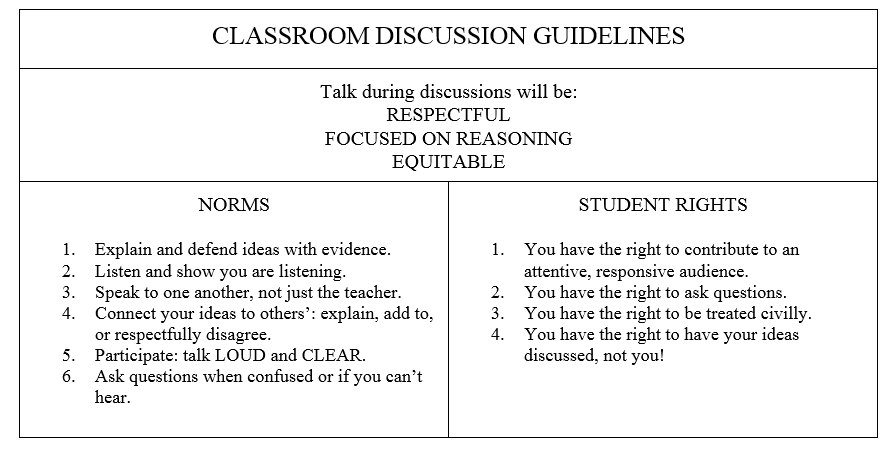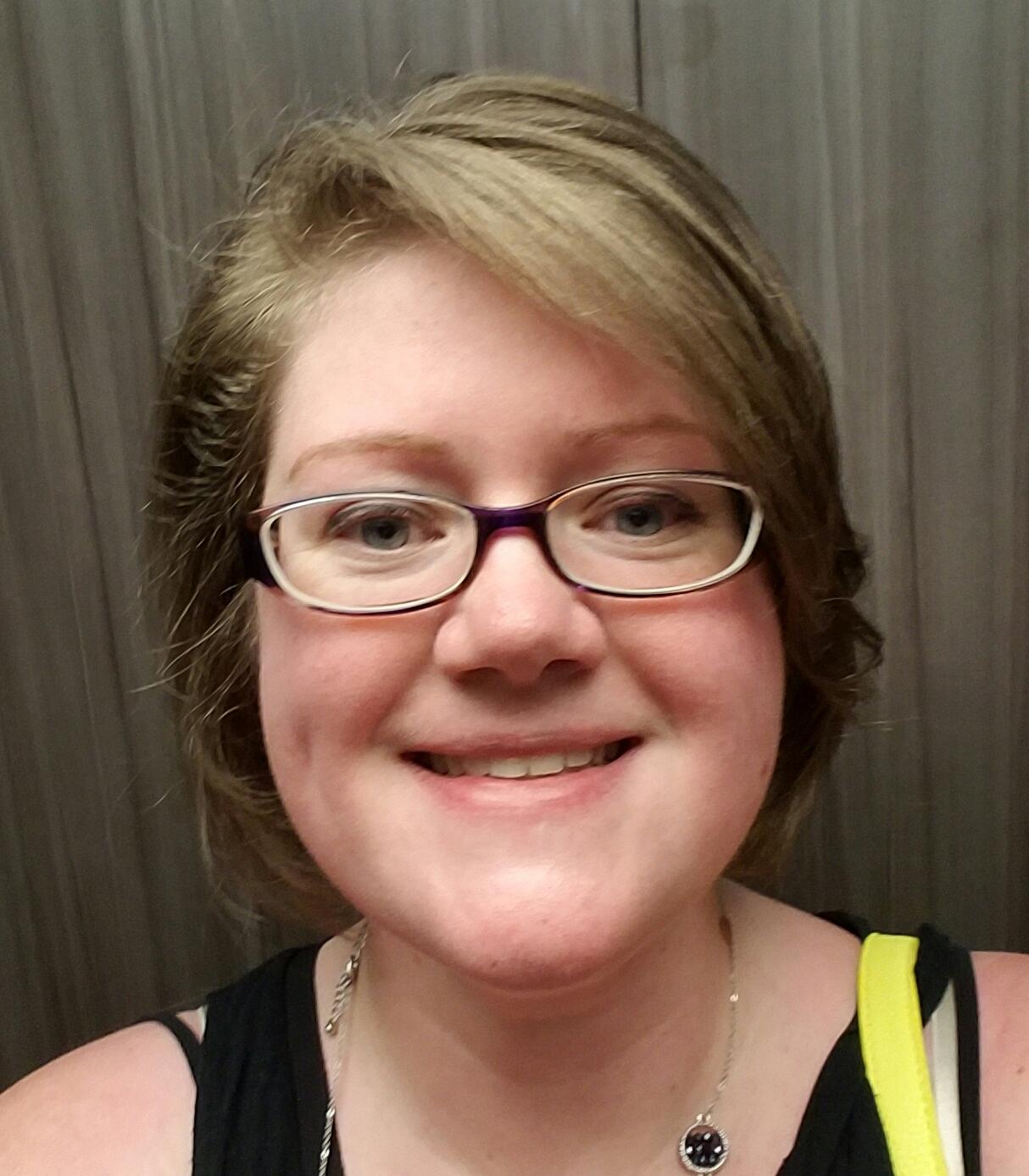Three Strategies for Building Classroom Community
By Nicole Vick
Posted on 2019-06-17
As I reflect on the end of this school year, I think about how successful I was in building a classroom community. A key aspect of transitioning my classroom to three-dimensional teaching and learning was discussion. Knowing this, I spent a lot of time at the beginning of the year building my classroom community.
One way I accomplished this was to give students with a list of classroom discussion norms, including those from the “green sheet” featured in “Establishing Classroom Discussion Norms” by Cathy O’Connor. Because I teach several different groups of students throughout the day, I decided to use the same norms rather than have students develop their own. I used those listed on the “green sheet” and developed a Classroom Discussion Norms sheet for students.

To help students to clearly understand the rights and responsibilities, I created an activity around the sheet. First, I put students into small groups and had them brainstorm what the three guidelines would look like during a discussion. We had a whole-group discussion to share their ideas and create an indicator list. Then, I had them return to their small groups, read the norms and student rights sections, and identify which of the three guidelines they relate to and why. Finally, each group shared their ideas and I recorded the group’s consensus.
Not only did they explore how a discussion should look in the classroom, they also modeled this as we worked through the activity. This helped students begin working with one another in small groups to discuss, and learn how to respect one another’s ideas, even if they don’t agree. Spending time on this at the beginning of the year begins to build a sense of community with the group because they have taken time to build an understanding around the classroom norms, rather than just hearing about them.
A second strategy I use to help build a classroom community is to change it up! I have students work in groups quite often. Instead of letting them pick their own groups, which typically results with them being with the same people every time, I choose the groups and change them up every few lessons. This helps build community because students become comfortable working with everyone in the class. By strategically putting people in different groups, sometimes encourages the quieter students to find their voice. Because they have been able to talk to everyone in a small-group setting, they feel less pressure and anxiety to speak to the large group. Another skill that can be improved by strategic grouping is listening. Students who struggle with listening to others can be grouped together, which encourages them to listen rather than talk over one another.
A final strategy I use to build a classroom community is to be honest with my students and ask for their feedback. Part of the transition to a three-dimensional classroom means my classroom is often “ground zero” to try out new things. If I sense that something went well, or didn’t go so well, we talk about it! I am open with my students and will often tell them, “you’re guinea pigs today” when we are trying out something I’ve never done before.
We work together, sometimes on the fly, to improve a lesson when things aren’t working so well. Sometimes this means that we take a step back and re-do a portion of the lesson, especially when productive struggle becomes just struggling. Other times, we alter an activity sheet we are working with, either changing a data table or creating a digital, collaborative one using Google Sheets.
Sometimes we take longer than expected to complete a lesson, but I reassure my students that it’s okay if we do. Letting them know we are all in this together and that they have a voice in how a lesson is presented continues to build that community.
Using these three strategies, as well as building relationships with my students, helps to build a classroom community for the time that I have my students. Since using these strategies, I have found that student engagement has increased and students have grown in their ability to make sense of phenomena. And, looking forward to next year, I am always thinking about ways we can improve the process, because it’s not perfect! Like classroom lessons, some classes are more successful than others.
My most meaningful reflection on this school year is that teaching on a trimester schedule has added new challenges to maintaining a classroom culture because I gain and lose students at the start of each new trimester. Next year, I plan to spend time at the beginning of each trimester establishing, or reestablishing, my classroom community.

Nicole Vick is a 16-year veteran high school science teacher and has taught a wide variety of science courses. She currently serves as District XII Director for NSTA and is a Regional Director for the Illinois Science Teachers Association. Vick has helped develop curriculum and provide professional development for teachers. In her spare time, she enjoys traveling and taking her daughter to concerts and musicals.
Note: This article is featured in the June issue of Next Gen Navigator, a monthly e-newsletter from NSTA delivering information, insights, resources, and professional learning opportunities for science educators by science educators on the Next Generation Science Standards and three-dimensional instruction. Click here to sign up to receive the Navigator every month.
Visit NSTA’s NGSS@NSTA Hub for hundreds of vetted classroom resources, professional learning opportunities, publications, ebooks and more; connect with your teacher colleagues on the NGSS listservs (members can sign up here); and join us for discussions around NGSS at an upcoming conference.
The mission of NSTA is to promote excellence and innovation in science teaching and learning for all.
Future NSTA Conferences
2019 National Conference
STEM Forum & Expo
2019 Fall Conferences
Disclaimer: The views expressed in this blog post are those of the author(s) and do not necessarily reflect the official position of the National Science Teaching Association (NSTA).
Teaching Strategies Three-Dimensional Learning


